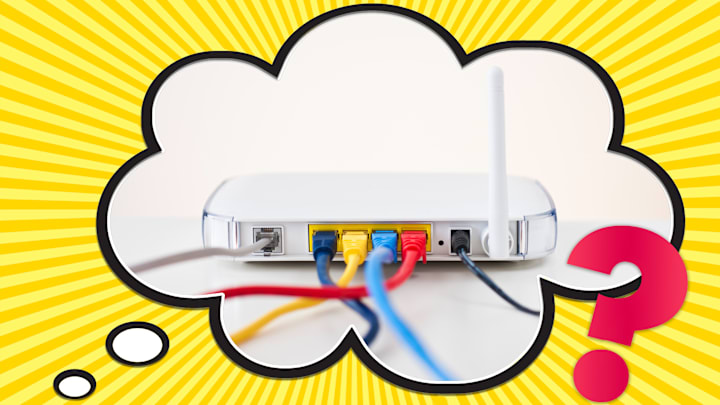Despite using it every day, many people find the internet a mystery. If asked to explain how your home internet connection works, you may start with your router and modem. Both devices are essential to setting up a wireless network, but they serve distinct functions. Here are the major differences between the two pieces of hardware that make home internet run.
What is a Modem?

The modem is your home’s gateway to the World Wide Web. It’s often a skinny box with a row of LED icons on the front that tell you if it’s on and connected to the internet. The name is short for modulator-demodulator—a phrase left over from the days of dial-up when modems worked by modulating telephone signals into frequencies that could send digital information.
Today, most modems use broadband connections like cable or satellite to transmit data. There are different types of modems built to fit different connections. If your internet service provider (ISP) uses cable or fiber internet, you'll need to plug a cable into the back of your modem, and if you still use a digital subscriber line (DSL), you'll have to plug in a phone line.
What is a Router?

You can connect to the internet with just a modem as long as you don’t mind plugging your device directly into the Ethernet port. But if you want to provide internet to all the laptops, desktops, and smartphones in your home at the same time, you’ll need a router.
Routers usually lie flat and have antennas sticking out of them. The router hooks up to your modem via an Ethernet cable and acts as a conduit between the direct internet and your home network. After connecting your devices, the router “routes” your modem’s networking traffic their way, either through Ethernet wires or wirelessly through Wi-Fi (that’s what the antennas are for). The router also works in the other direction by routing data sent from your computer back to the web.
Why Knowing the Difference Matters
When they’ve been sitting in the same spot in your home for years, it’s easy to think of your router and modem as basically the same thing. But it’s worth knowing the difference—especially if you care about improving your internet connection.
Now that you know the router is what directs Wi-Fi signals, you can boost your home network by placing it in a central location away from electronic appliances. And as long as it doesn’t interfere with the router, feel free to hide your modem behind a houseplant.
Have you got a Big Question you'd like us to answer? If so, send it to bigquestions@mentalfloss.com.
A version of this story ran in 2019; it has been updated for 2023.
